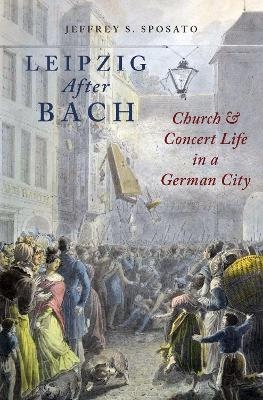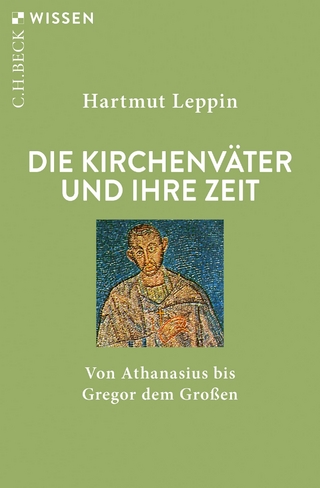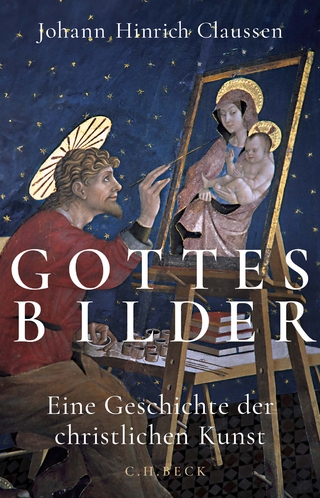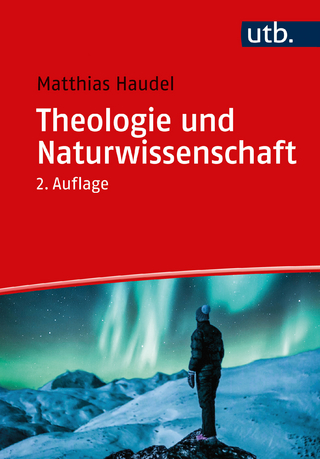
Leipzig After Bach
Oxford University Press Inc (Verlag)
978-0-19-061695-3 (ISBN)
Leipzig, Germany, is renowned as the city where Johann Sebastian Bach worked as a church musician until his death in 1750, and where Felix Mendelssohn Bartholdy directed the famed Gewandhaus orchestra until his own death in 1847. But the century in between these events was critically important as well. During this period, Leipzig's church music enterprise was convulsed by repeated external threats-a growing middle class that viewed music as an object of public consumption, religious and political tumult, and the chaos of the Seven Years and Napoleonic wars.
Jeffrey S. Sposato's Leipzig After Bach examines how these forces changed church and concert life in Leipzig. Whereas most European cities saw their public concerts grow out of secular institutions such as a royal court or an opera theater, neither of these existed when Leipzig's first subscription concert series, the Grosse Concert, was started in 1743. Instead, the city had a thriving Lutheran church-music enterprise that had been brought to its zenith by Bach. Paid subscription concerts therefore found their roots in Leipzig's church music tradition, with important and unique results. These included a revolving door between the Thomaskantor position and the Gewandhaus directorship, as well as public concerts with a distinctly sacred flavor. Late in the century, as church attendance faltered and demand for subscription concerts rose, the Gewandhaus dominated the musical life of Leipzig, influencing church music programming in turn.
Examining liturgical documents, orchestral programs, and dozens of unpublished works of church and concert music, Leipzig After Bach sheds new light on a century that redefined the relationship between sacred and secular musical institutions.
Jeffrey S. Sposato is Associate Professor of Musicology and Director of Graduate Studies at the Moores School of Music, University of Houston. His book The Price of Assimilation: Felix Mendelssohn and the Nineteenth-Century Anti-Semitic Tradition (OUP, 2006) was named a Choice Outstanding Academic Title for 2006 and a Royal Philharmonic Society Music Award finalist. His other publications include William Thomas McKinley: A Bio-Bibliography (Greenwood, 1995), as well as articles and reviews in 19th-Century Music, Music & Letters, Choral Journal, Musical Quarterly, Ars Lyrica, Notes, The New Grove Dictionary of Music and Musicians (second edition), and several edited collections.
List of Illustrations
List of Musical Examples
List of Tables
Abbreviations
Acknowledgements
Introduction
I Leipzig, Saxony, and Lutheran Orthodoxy
Saxony and the Birth of the Reformation
The Establishment of Orthodoxy in Saxony
Threats to Orthodoxy: Pietism and Rationalism
A Catholic King
Leipzig and the Lutheran Mass
II Church Music and the Rise of the Public Concert, 1743-85
From Collegium to Concert
Bach, the Cantata, and the Concerted Mass
Gottlob Harrer and the New Era of Leipzig Church Music
Johann Friedrich Doles and Approachable Church Music
Hiller, Church Music, and the Grosse Concert
The Gewandhaus
III Hiller, Schicht, and the Crises of Church and State, 1785-1823
Hiller as Thomaskantor
The Cantor, the Superintendent, and the Crisis in the Church
August Müller and the Invasion of Leipzig
Schicht and the Transformation of Gewandhaus Sacred Music
IV Mendelssohn and the Transformation of Leipzig Musical Culture
Schulz, Pohlenz, and a Demand for Change at the Gewandhaus
Mendelssohn and a New Vision for Music in Leipzig
Programming Trends
Mendelssohn and Serious Music
"They prefer to ignore Weinlig"
An Ally for Change: Moritz Hauptmann as Thomaskantor
Epilogue
Bibliography
Index
| Erscheinungsdatum | 28.07.2018 |
|---|---|
| Zusatzinfo | 30 line, 26 halftone |
| Verlagsort | New York |
| Sprache | englisch |
| Maße | 236 x 160 mm |
| Gewicht | 612 g |
| Themenwelt | Kunst / Musik / Theater ► Musik ► Klassik / Oper / Musical |
| Kunst / Musik / Theater ► Musik ► Musikgeschichte | |
| Kunst / Musik / Theater ► Musik ► Musiktheorie / Musiklehre | |
| Kunst / Musik / Theater ► Musik ► Pop / Rock | |
| Religion / Theologie ► Christentum ► Kirchengeschichte | |
| ISBN-10 | 0-19-061695-4 / 0190616954 |
| ISBN-13 | 978-0-19-061695-3 / 9780190616953 |
| Zustand | Neuware |
| Haben Sie eine Frage zum Produkt? |
aus dem Bereich


